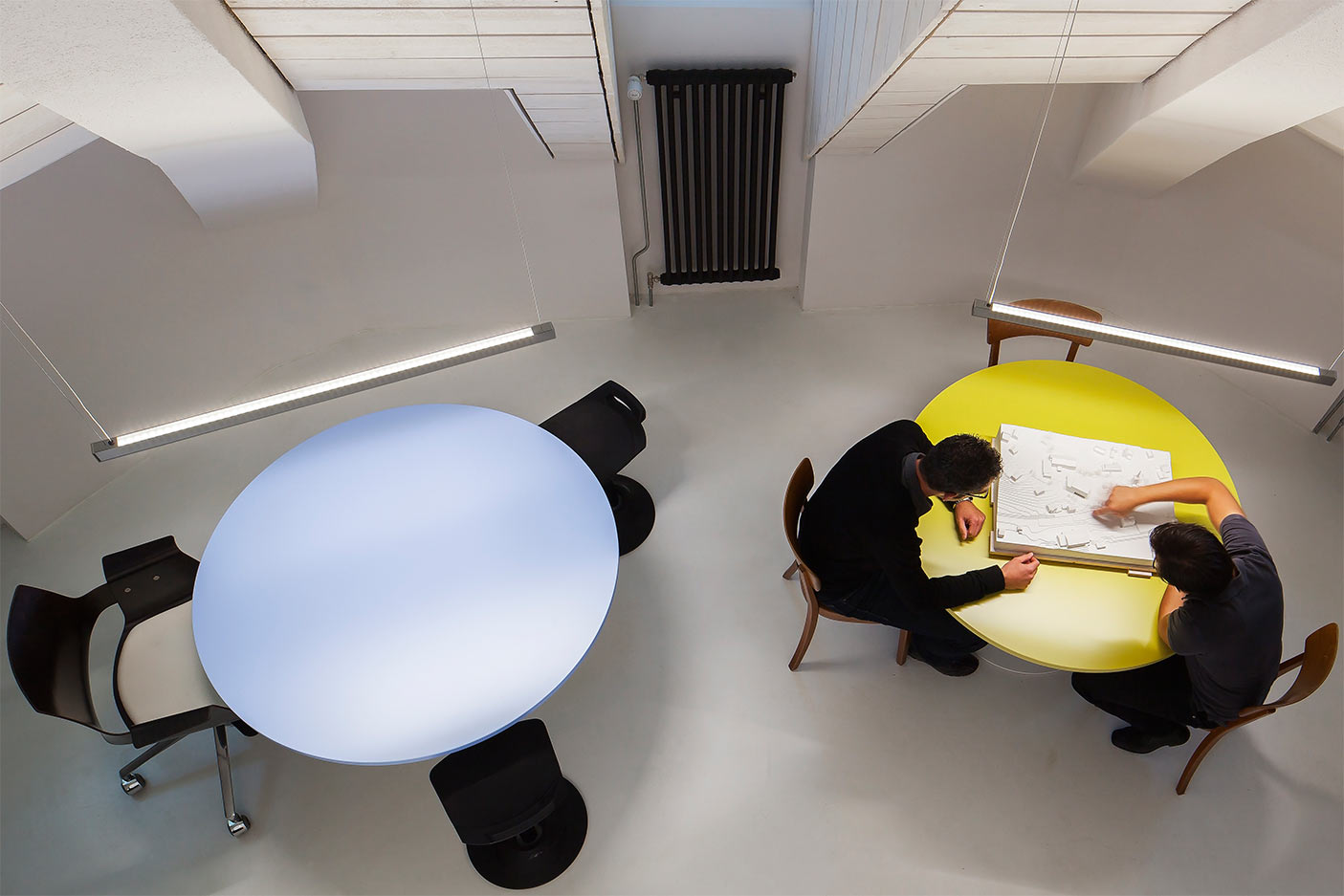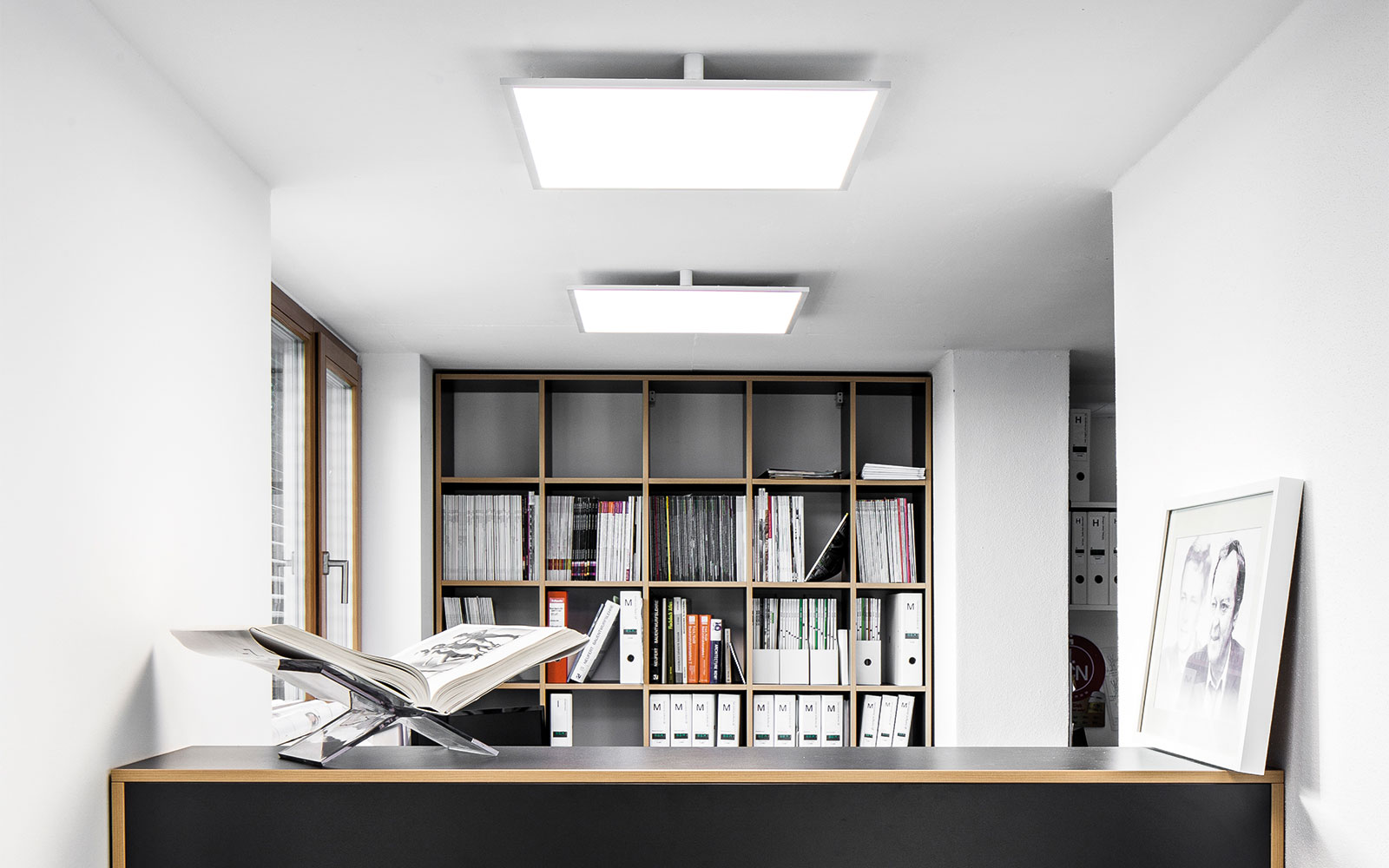
Office Lighting
And then there was light
While natural light at the workplace is undoubtedly one of the most important factors in terms of worker well-being, it also has its “dark side,” particularly for computer workstations. Which means that each workplace needs to display a proper balance between natural and artificial light.
For in the final analysis a felicitous mixture of general office lighting and individually adjustable light sources facilitates productivity and enables workers to enjoy their work. Office lighting should be designed in such a way that it can be adjusted to user tasks and eyesight, and to specific work scenarios. For example, depending on an office building’s orientation, a light source may dovetail optimally with natural light in the morning, while creating unduly severe lighting contrast come afternoon.
Oftentimes, the deleterious health effects of inadequate or unsuitable lighting are not immediately perceptible or are not recognized as the cause of various ailments, which, particularly in individuals who work at a computer, can include headache, sore eyes, vision disturbances, dizziness, fatigue and poor concentration.
A competent lighting designer will know how to mitigate such effects. In so doing he/she will take account of the relevant legal, ergonomic, and psychological factors and will incorporate high-tech, energy-saving solutions into the lighting design – all of course for the benefit of the individuals affected.



